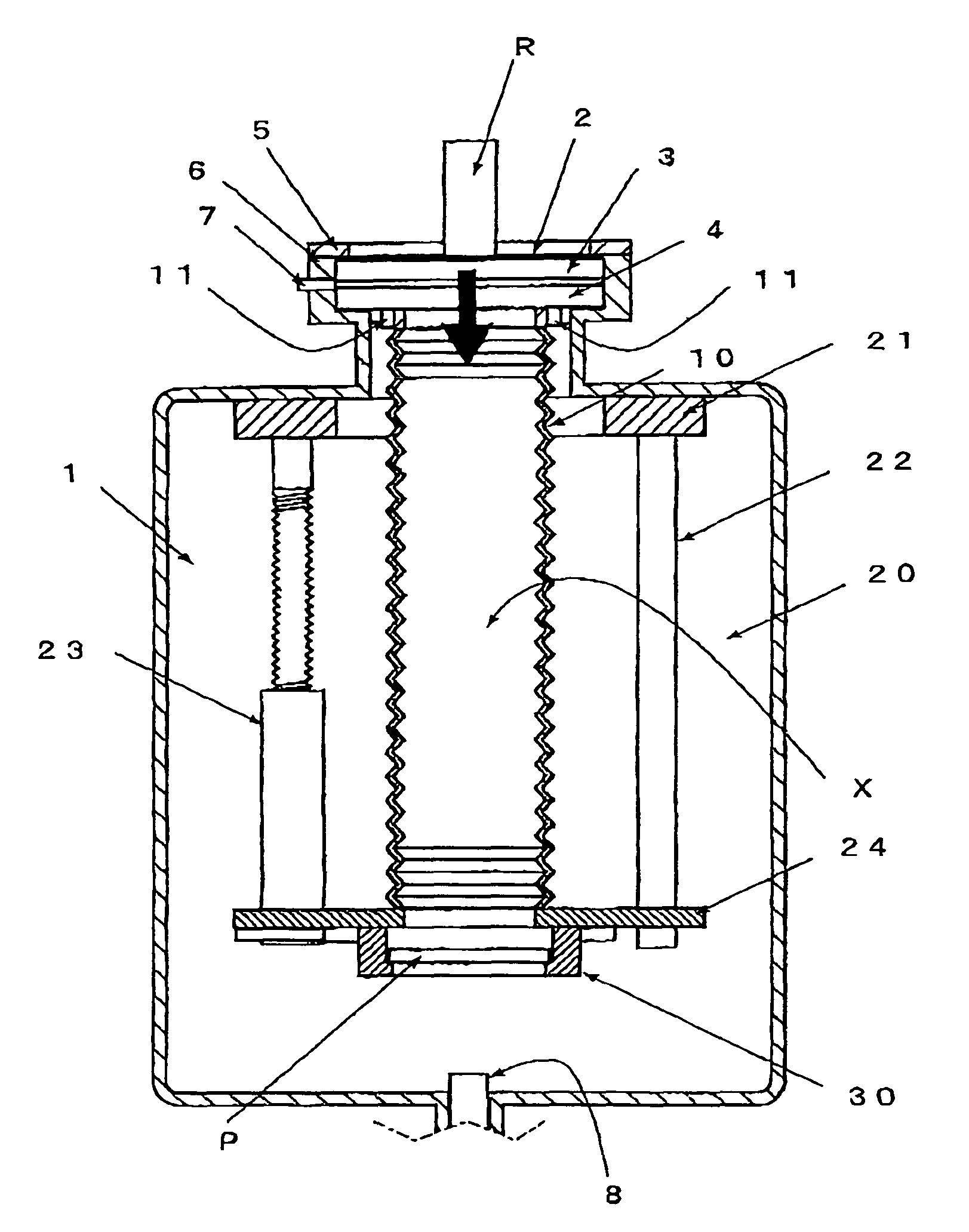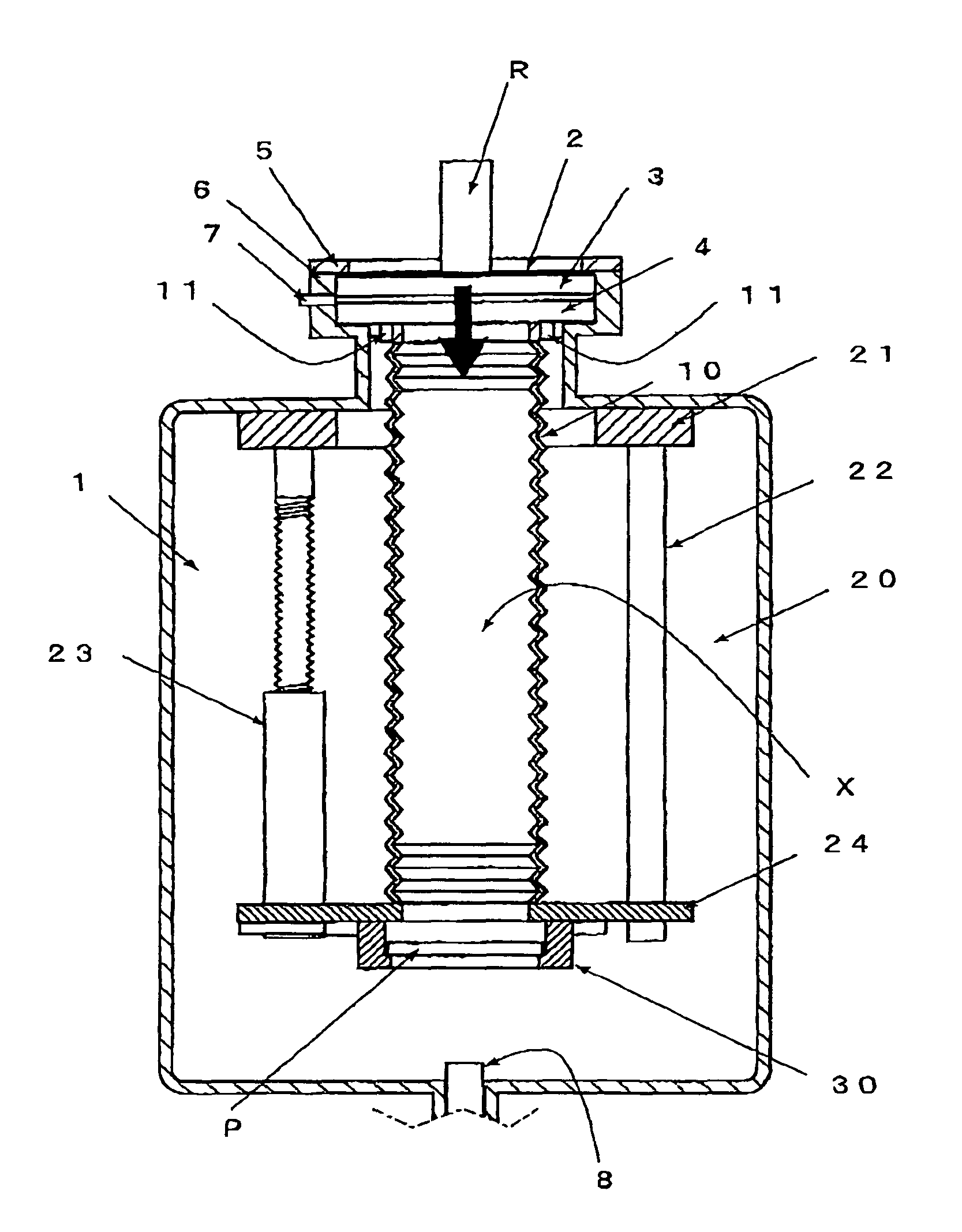Device for vacuum processing
a vacuum processing and device technology, applied in the field of vacuum processing devices, can solve the problems of hindering temperature increase, heat induction system, difficult to heat a substrate to 1000° c. or higher, etc., and achieve the effect of changing the substrate temperature in a short tim
- Summary
- Abstract
- Description
- Claims
- Application Information
AI Technical Summary
Benefits of technology
Problems solved by technology
Method used
Image
Examples
Embodiment Construction
[0029]One embodiment of the present invention will hereinafter be described. Of course, the invention is not limited thereto.
[0030]FIG. 1 is a vertical view showing an embodiment of a device for vacuum processing in the present invention.
[0031]A vacuum chamber (1) has a light transmissible window (6) at the top. The light transmissible window (6) is fixed by a fixing flange (5) so that a space having an anti-fog gas inlet (7) is left between upper and lower reinforcement glass plates (3) and (4). An anti-reflection film (2) is formed on the upper face of the upper reinforcement glass (3).
[0032]A high output semiconductor laser emitter (R) of collimation type is installed above the upper reinforcement glass (3) so that the direction of emission is oriented downward (indicated by the black arrow in FIG. 1).
[0033]A substrate raising / lowering device (20) in the vacuum chamber (1) is configured such that an upper frame (21) fixed to the upper part of the vacuum chamber (1) and a lower fr...
PUM
| Property | Measurement | Unit |
|---|---|---|
| temperatures | aaaaa | aaaaa |
| temperatures | aaaaa | aaaaa |
| temperature | aaaaa | aaaaa |
Abstract
Description
Claims
Application Information
 Login to View More
Login to View More - R&D
- Intellectual Property
- Life Sciences
- Materials
- Tech Scout
- Unparalleled Data Quality
- Higher Quality Content
- 60% Fewer Hallucinations
Browse by: Latest US Patents, China's latest patents, Technical Efficacy Thesaurus, Application Domain, Technology Topic, Popular Technical Reports.
© 2025 PatSnap. All rights reserved.Legal|Privacy policy|Modern Slavery Act Transparency Statement|Sitemap|About US| Contact US: help@patsnap.com


